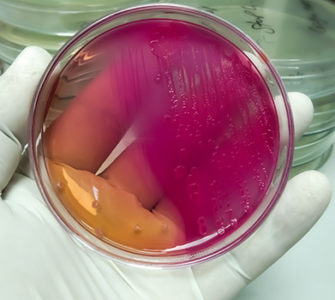Mountaire veterinarian discusses managing E. coli in broilers in the face of IBV infection
During the winter of 2015, broiler producers on the Delmarva Peninsula were hit with a new infectious bronchitis variant, Delmarva 1639.
Without an effective vaccine for that IB variant, poultry producers focused on controlling the secondary infection, Escherichia coli, in an attempt to reduce mortality and production losses.
“The losses were widespread with all five of the major producers seeing mortality rates of 10% and condemnations at twice the national average,” Don Ritter, DVM, of Mountaire Farms told Poultry Health Today.
Cold weather, decreased ventilation and increased ammonia levels compounded the stress on the birds, providing an opportunity for E. coli to add to the birds’ pathology. Any disease that challenges the respiratory or immune system opens the door for E. coli.
“Once infectious bronchitis damages the cilia in the trachea, E. coli moves in,” Ritter said. The secondary E. coli infection led to higher levels of exudative pathology in the birds and more condemnations due to lesions in addition to the high mortality levels.
In an effort to reduce mortality levels, and without an effective IB vaccine, producers began vaccinating for E. coli.
“The only thing we really had going for us in terms of control was the vaccine,” Ritter said. “We found in the houses with high mortality levels, it really helped. We still had high levels of condemnations, but the vaccine paid for itself in reduced mortality.”
With warmer weather, increased ventilation and lower ammonia levels, the IB threat subsided. “We saw our mortality levels drop as we moved into spring but our condemnation levels due to E. coli remained higher than normal into summer,” Ritter said.
Secondary E. coli infections frequently occur following damage to the respiratory system from IB, Newcastle disease or an immune-system challenge.
For the winter of 2016, Delmarva broiler producers are looking to a new IB vaccine for cross protection. In addition, they are conducting an intense trial of E. coli vaccinations every 2 of 3 weeks in the coldest months.
For more on Mountaire’s experience, watch the video of the interview.
Posted on April 7, 2016

















